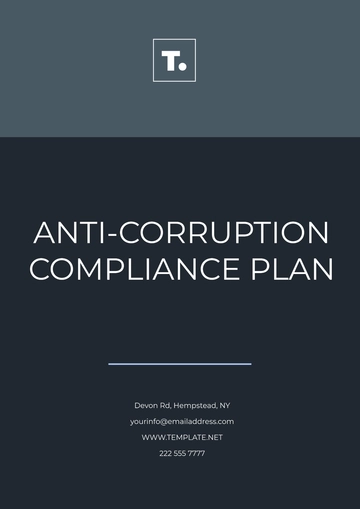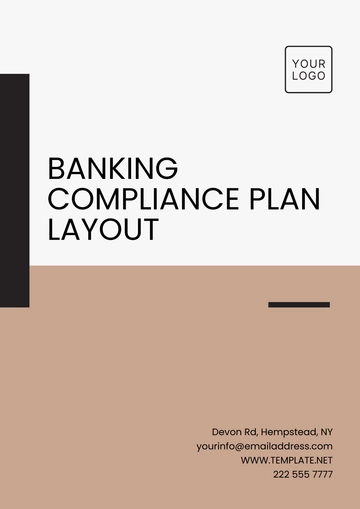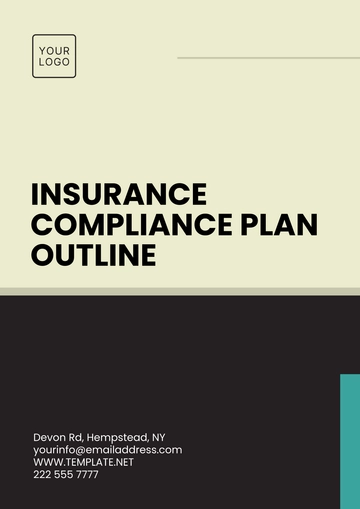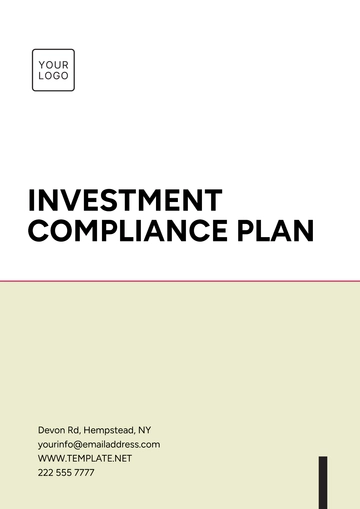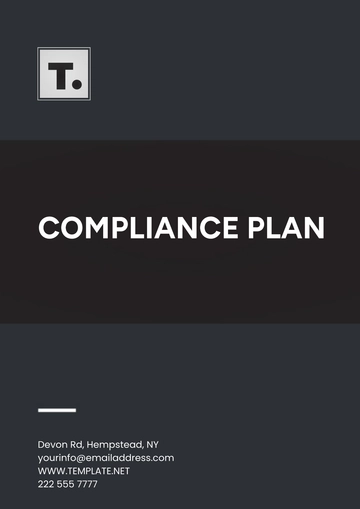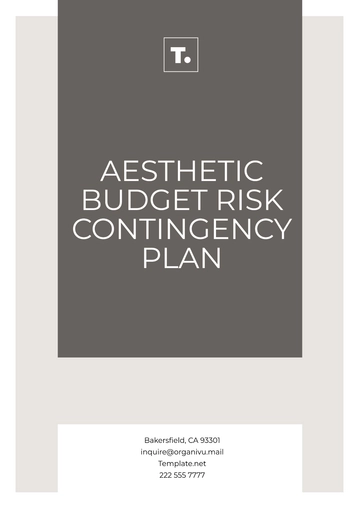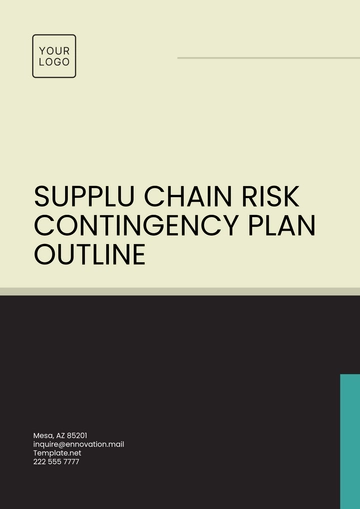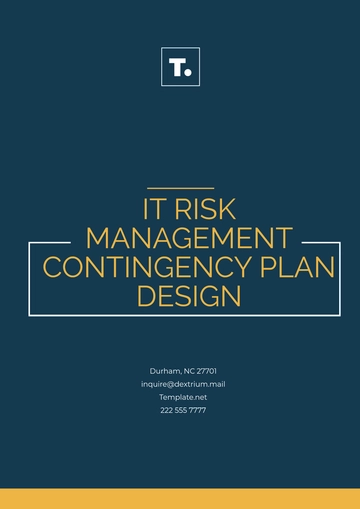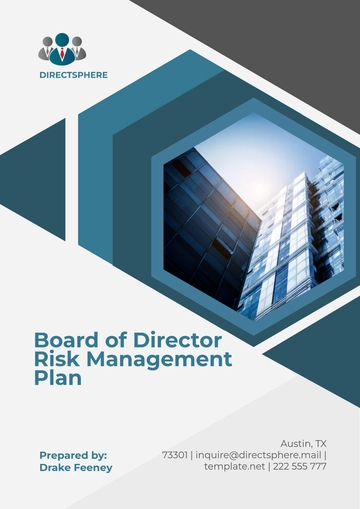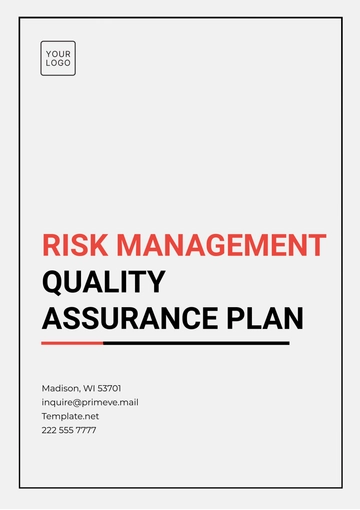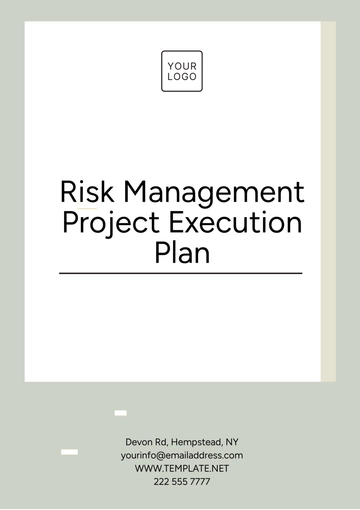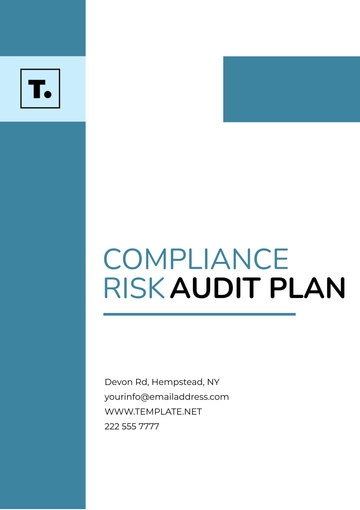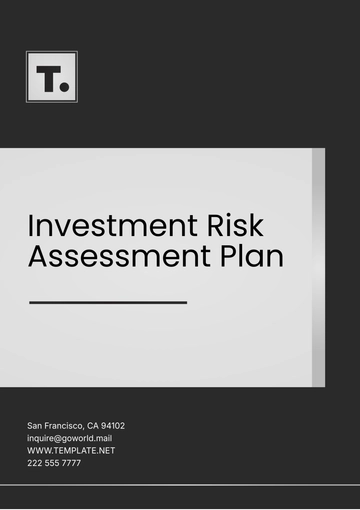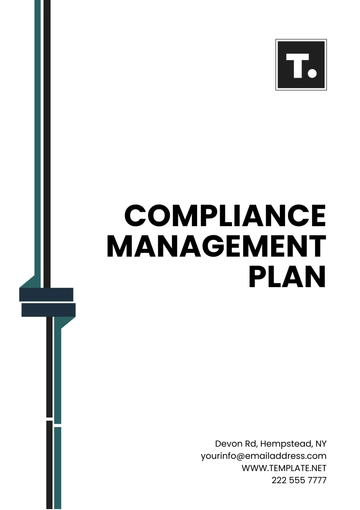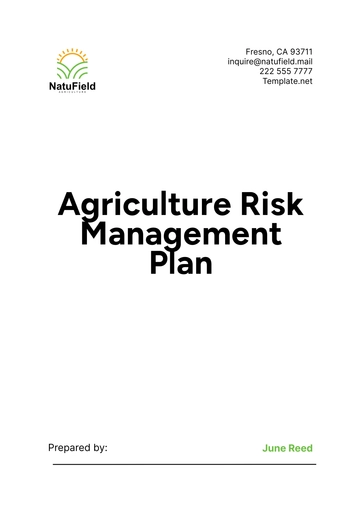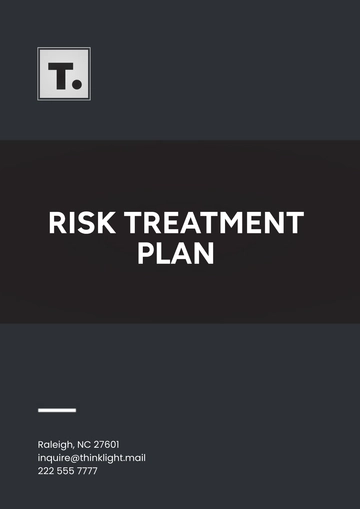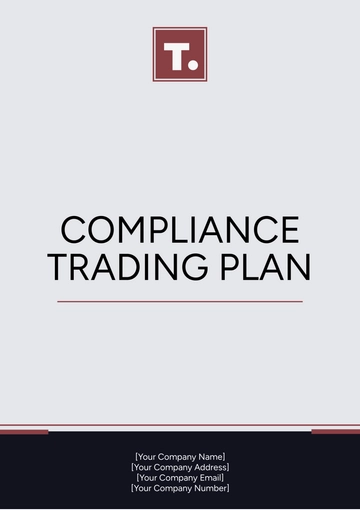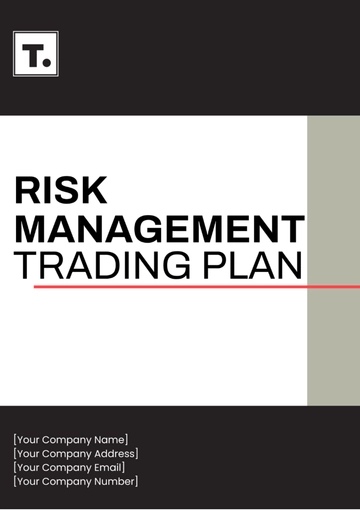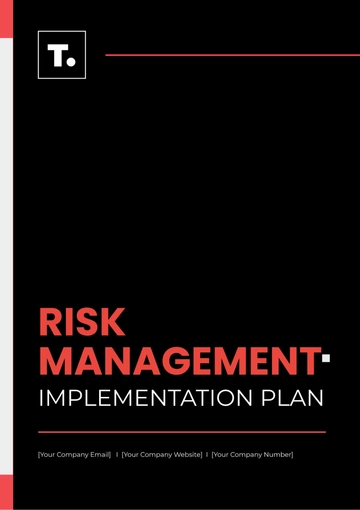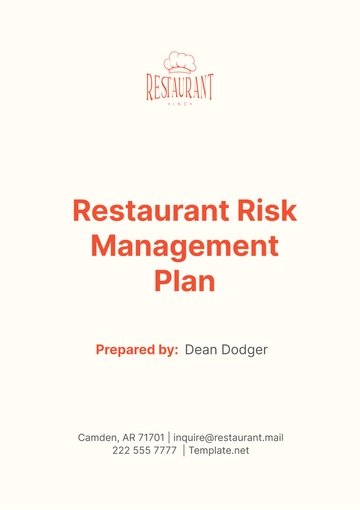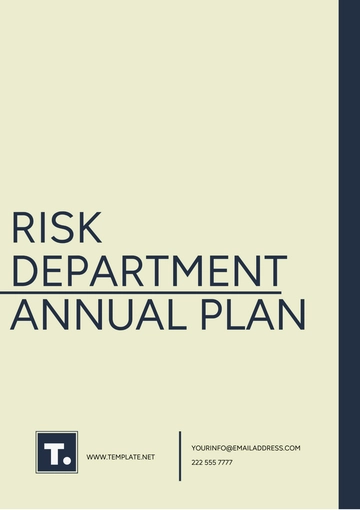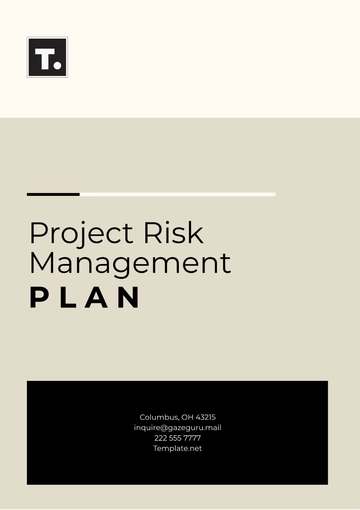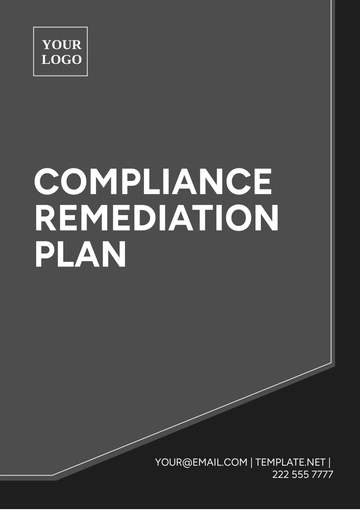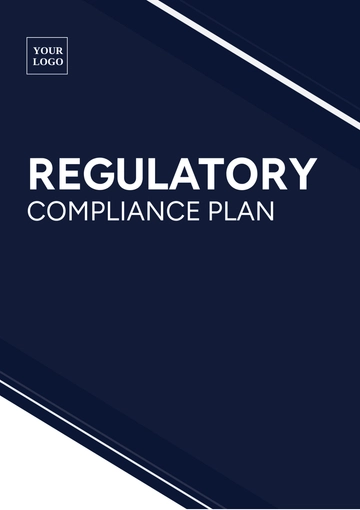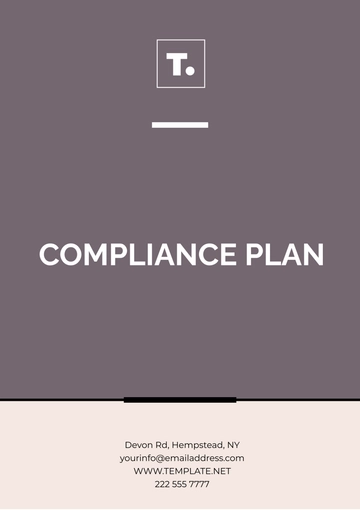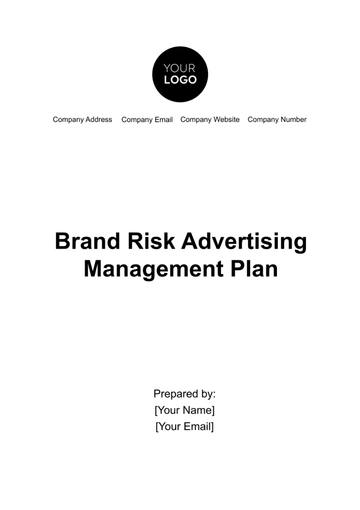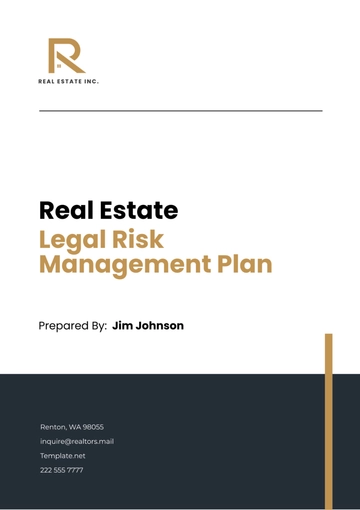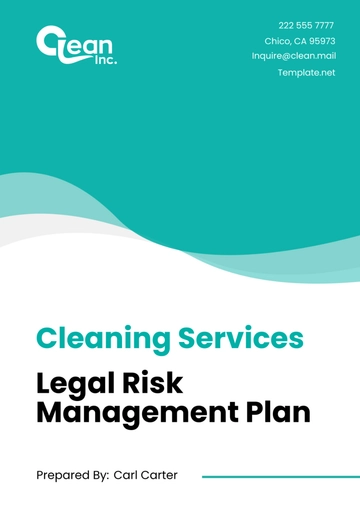Free Financial Long-Term Risk Management Plan
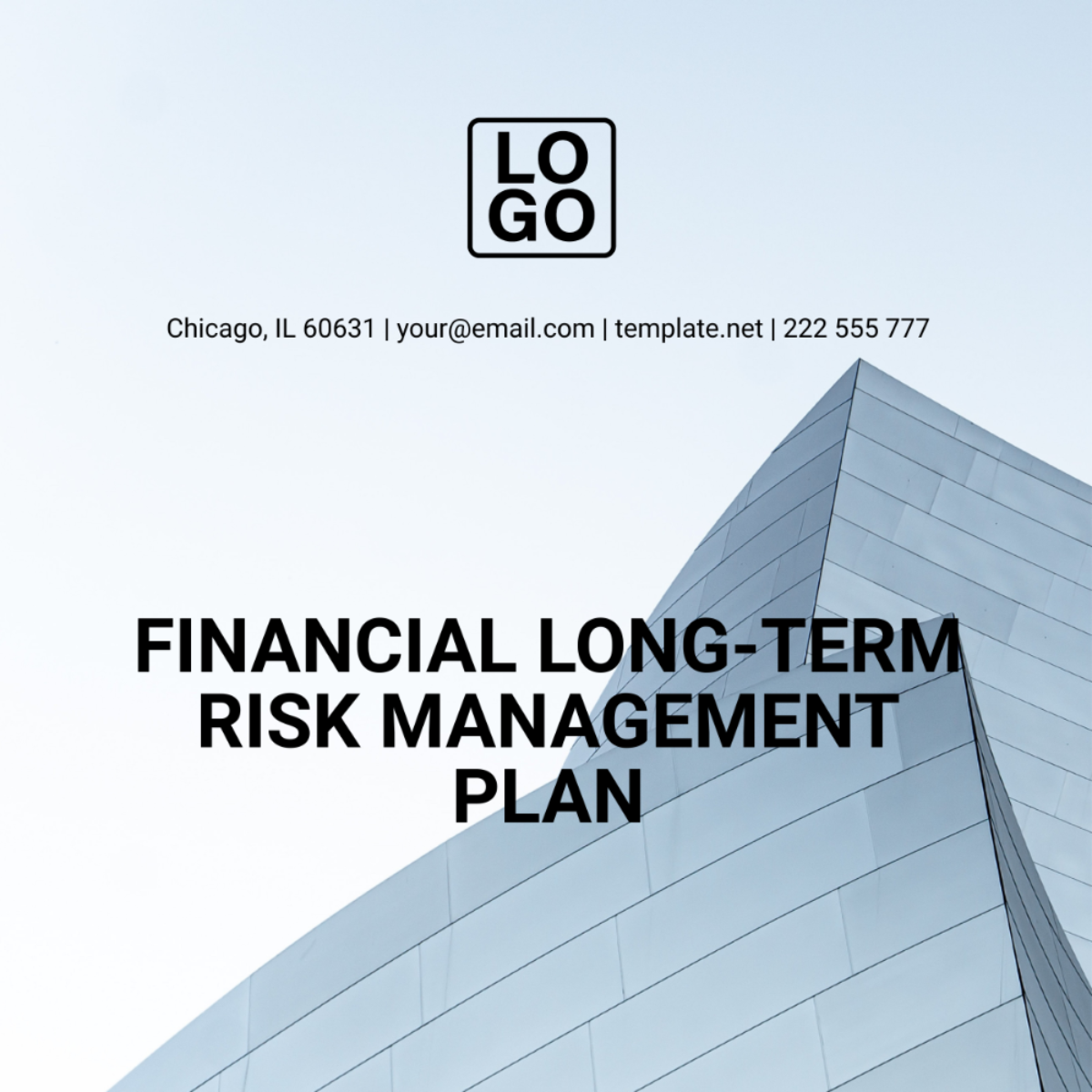
Executive Summary
In this Financial Long-Term Risk Management Plan, we articulate a strategic approach tailored to [Your Company Name]'s commitment to financial stability and growth. Recognizing the dynamic nature of financial markets and regulatory environments, this plan serves as a guiding framework for identifying, assessing, and mitigating risks over an extended period. It is designed to safeguard our organization's assets, ensure compliance with US financial regulations, and support our long-term strategic objectives.
The plan outlines a comprehensive risk management process, encompassing a range of potential risks - from market and credit risks to operational and strategic risks. By integrating this plan into our core business strategy, we aim to enhance our resilience against financial uncertainties and position [Your Company Name] for sustained success. Our approach prioritizes adaptability, ensuring that our risk management practices remain effective in an evolving economic landscape.
Risk Identification
This section of the Financial Long-Term Risk Management Plan systematically identifies key risks facing [Your Company Name]. By categorizing risks into distinct areas such as market, credit, operational, compliance, and strategic risks, we establish a foundational understanding necessary for effective risk assessment and management in alignment with US standards.
A. Market Risks
Interest Rate Fluctuations: Examines how changes in interest rates can impact our investments and borrowing costs.
Foreign Exchange Volatility: Assesses the risk associated with fluctuations in foreign currency exchange rates affecting international transactions.
B. Credit Risks
Counterparty Default: Evaluates the risk of loss stemming from a counterparty failing to fulfill its financial obligations.
Creditworthiness Changes: Monitors changes in the creditworthiness of borrowers or counterparties.
C. Operational Risks
Process Failures: Identifies risks from internal process inefficiencies or failures.
Technology Risks: Assesses vulnerabilities related to technological infrastructure and cyber threats.
D. Compliance and Regulatory Risks
Regulatory Changes: Keeps track of evolving financial regulations and their impact on operations.
Non-Compliance Consequences: Evaluates the risks and potential costs associated with non-compliance.
E. Strategic Risks
Business Model Challenges: Assesses risks inherent in the current business model against market evolution.
Reputation Risk: Considers the impact of various factors on the company's reputation and stakeholder trust.
Risk Analysis and Assessment
In this section, we delve into analyzing and assessing the identified risks. Utilizing a structured approach, each risk is evaluated based on its probability, potential impact, and the company's preparedness. The tabular representation below facilitates a clear and concise understanding of where our focus and resources should be directed.
Risk Category | Probability (Low/Medium/High) | Potential Impact (Low/Medium/High) |
|---|---|---|
Interest Rate Fluctuations | Medium | High |
Foreign Exchange Volatility | High | Medium |
Counterparty Default | Low | High |
Technology Risks | Medium | High |
Regulatory Changes | High | Medium |
Risk Appetite and Tolerance
The Risk Appetite and Tolerance section defines [Your Company Name]'s willingness to bear risk in pursuit of its strategic objectives. This table illustrates our appetite for various risk categories, aligning them with our tolerance levels, to ensure informed decision-making and alignment with our long-term financial goals.
Risk Category | Appetite and Tolerance Level (Low/Moderate/High) |
|---|---|
Market Risks | Moderate |
Credit Risks | Credit Risks |
Operational Risks | Moderate |
Compliance and Regulatory Risks | Low |
Risk Mitigation Strategies
This section outlines the Risk Mitigation Strategies, presenting a structured approach to proactively address each identified risk. The strategies are tailored to minimize potential impacts on [Your Company Name]'s financial stability and growth. Presented in a tabular format, this section offers clear guidelines on how to effectively manage and mitigate various risk categories.
Risk Category | Mitigation Strategy |
|---|---|
Market Risks | Diversification; Hedging |
Credit Risks | Credit Analysis; Collateral Requirements |
Operational Risks | Process Optimization; Technology Upgrades |
Compliance and Regulatory Risks | Regular Training; Compliance Audits |
Strategic Risks | Scenario Planning; Reputation Management |
Implementation Plan
The Implementation Plan is a critical component of our Financial Long-Term Risk Management Plan, detailing how we will execute our mitigation strategies. This table assigns specific responsibilities, timelines, and resources for each risk category, ensuring a systematic and accountable approach. It's designed to guide [Your Company Name] through the effective deployment of our risk management efforts.
Risk Category | Timeline | Responsibility | Resources |
|---|---|---|---|
Market Risks | Next quarter | Investment Management Team | Financial tools, market analysis software |
Credit Risks | Next six months | Credit Risk Department | Credit analysis software, training |
Operational Risks | Within one year | Operations Manager, IT Support | Budget for process review, technology upgrades |
Compliance and Regulatory Risks | Starting immediately, ongoing | Compliance Department | Training programs, audit tools |
Strategic Risks | Bi-annually | Strategic Planning Team | External consultants, market research |
Monitoring and Review
In the Monitoring and Review phase, [Your Company Name] commits to regularly tracking and evaluating the effectiveness of our risk management strategies. This ongoing process involves the use of key performance indicators (KPIs) and risk metrics to assess how well risks are being managed and whether the mitigation strategies are achieving their intended outcomes. Regular reports will be generated and reviewed by the Risk Management Committee to ensure continuous improvement and adaptability in our risk management approach.
Additionally, this phase includes periodic reviews, scheduled bi-annually, to reassess and update our risk management plan. These reviews take into account changes in the external financial environment, emerging risks, and the evolving strategic objectives of our company. This ensures that our risk management practices remain relevant, effective, and aligned with both industry standards and our long-term financial goals. This dynamic approach allows us to proactively adjust our strategies in response to new information and market conditions.
Contingency Planning
Contingency Planning is a vital component of [Your Company Name]'s Financial Long-Term Risk Management Plan. It outlines preparedness measures for unexpected risk events, ensuring the company's resilience and ability to respond swiftly and effectively. This section details specific plans for various risk categories, safeguarding our operations and financial stability against unforeseen circumstances and market dynamics.
A. Market Risks
Emergency Fund: Establish a reserve fund to cushion against sudden market downturns.
Flexible Asset Reallocation: Prepare to swiftly reallocate assets in response to market changes.
B. Credit Risks
Insurance Policies: Obtain insurance against significant counterparty defaults.
Alternative Credit Arrangements: Arrange for alternative lines of credit to manage unexpected credit events.
C. Operational Risks
Backup Systems: Implement robust backup systems for critical operational processes.
Crisis Management Team: Form a dedicated team to handle operational crises.
D. Compliance and Regulatory Risks
Legal Advisory: Keep a legal team on retainer for immediate consultation on regulatory changes.
Compliance Buffer: Maintain a compliance buffer to manage unforeseen regulatory demands.
E. Strategic Risks
Scenario Analysis: Regularly conduct scenario analysis for potential strategic disruptions.
Diversification of Business Lines: Diversify business lines to reduce reliance on a single source of revenue.
Governance and Oversight
Governance and Oversight are critical to ensuring the effectiveness and integrity of the Financial Long-Term Risk Management Plan at [Your Company Name]. This section outlines the roles and responsibilities of key personnel and committees, establishing a clear governance structure. It ensures accountability, transparency, and alignment with the organization's risk management objectives and regulatory requirements.
Role/Committee | Responsibilities |
|---|---|
Board of Directors | Overall oversight of risk management policies and strategies. |
Risk Management Committee | Develop, implement, and monitor risk management processes. |
Compliance Department | Ensure adherence to legal and regulatory standards. |
Internal Audit | Provide independent evaluation of risk management effectiveness. |
Reporting and Communication
In the Reporting and Communication phase of our Financial Long-Term Risk Management Plan, [Your Company Name] emphasizes transparency and regular information dissemination. This involves creating detailed reports that encapsulate the status and effectiveness of our risk management efforts. These reports, prepared by the Risk Management Committee, are periodically presented to the Board of Directors and relevant stakeholders, ensuring they are informed about risk exposure, mitigation actions taken, and any necessary adjustments to the strategy.
Furthermore, this phase ensures consistent communication across all levels of the organization. Regular updates and educational sessions are conducted to keep employees informed and engaged with our risk management policies. This approach fosters a culture of risk awareness and ensures that all staff members understand their role in the company's risk management framework. Effective internal communication is crucial for the quick identification and reporting of potential risks, enhancing our overall risk management capability.
- 100% Customizable, free editor
- Access 1 Million+ Templates, photo’s & graphics
- Download or share as a template
- Click and replace photos, graphics, text, backgrounds
- Resize, crop, AI write & more
- Access advanced editor
Enhance your financial strategy with Template.net's Financial Long-Term Risk Management Plan Template. This expertly designed template is fully editable and customizable, ensuring a tailored fit for your business needs. Easily editable in our Ai Editor Tool, making your risk management planning efficient and precise. A perfect tool for savvy financial planning.
You may also like
- Finance Plan
- Construction Plan
- Sales Plan
- Development Plan
- Career Plan
- Budget Plan
- HR Plan
- Education Plan
- Transition Plan
- Work Plan
- Training Plan
- Communication Plan
- Operation Plan
- Health And Safety Plan
- Strategy Plan
- Professional Development Plan
- Advertising Plan
- Risk Management Plan
- Restaurant Plan
- School Plan
- Nursing Home Patient Care Plan
- Nursing Care Plan
- Plan Event
- Startup Plan
- Social Media Plan
- Staffing Plan
- Annual Plan
- Content Plan
- Payment Plan
- Implementation Plan
- Hotel Plan
- Workout Plan
- Accounting Plan
- Campaign Plan
- Essay Plan
- 30 60 90 Day Plan
- Research Plan
- Recruitment Plan
- 90 Day Plan
- Quarterly Plan
- Emergency Plan
- 5 Year Plan
- Gym Plan
- Personal Plan
- IT and Software Plan
- Treatment Plan
- Real Estate Plan
- Law Firm Plan
- Healthcare Plan
- Improvement Plan
- Media Plan
- 5 Year Business Plan
- Learning Plan
- Marketing Campaign Plan
- Travel Agency Plan
- Cleaning Services Plan
- Interior Design Plan
- Performance Plan
- PR Plan
- Birth Plan
- Life Plan
- SEO Plan
- Disaster Recovery Plan
- Continuity Plan
- Launch Plan
- Legal Plan
- Behavior Plan
- Performance Improvement Plan
- Salon Plan
- Security Plan
- Security Management Plan
- Employee Development Plan
- Quality Plan
- Service Improvement Plan
- Growth Plan
- Incident Response Plan
- Basketball Plan
- Emergency Action Plan
- Product Launch Plan
- Spa Plan
- Employee Training Plan
- Data Analysis Plan
- Employee Action Plan
- Territory Plan
- Audit Plan
- Classroom Plan
- Activity Plan
- Parenting Plan
- Care Plan
- Project Execution Plan
- Exercise Plan
- Internship Plan
- Software Development Plan
- Continuous Improvement Plan
- Leave Plan
- 90 Day Sales Plan
- Advertising Agency Plan
- Employee Transition Plan
- Smart Action Plan
- Workplace Safety Plan
- Behavior Change Plan
- Contingency Plan
- Continuity of Operations Plan
- Health Plan
- Quality Control Plan
- Self Plan
- Sports Development Plan
- Change Management Plan
- Ecommerce Plan
- Personal Financial Plan
- Process Improvement Plan
- 30-60-90 Day Sales Plan
- Crisis Management Plan
- Engagement Plan
- Execution Plan
- Pandemic Plan
- Quality Assurance Plan
- Service Continuity Plan
- Agile Project Plan
- Fundraising Plan
- Job Transition Plan
- Asset Maintenance Plan
- Maintenance Plan
- Software Test Plan
- Staff Training and Development Plan
- 3 Year Plan
- Brand Activation Plan
- Release Plan
- Resource Plan
- Risk Mitigation Plan
- Teacher Plan
- 30 60 90 Day Plan for New Manager
- Food Safety Plan
- Food Truck Plan
- Hiring Plan
- Quality Management Plan
- Wellness Plan
- Behavior Intervention Plan
- Bonus Plan
- Investment Plan
- Maternity Leave Plan
- Pandemic Response Plan
- Succession Planning
- Coaching Plan
- Configuration Management Plan
- Remote Work Plan
- Self Care Plan
- Teaching Plan
- 100-Day Plan
- HACCP Plan
- Student Plan
- Sustainability Plan
- 30 60 90 Day Plan for Interview
- Access Plan
- Site Specific Safety Plan
